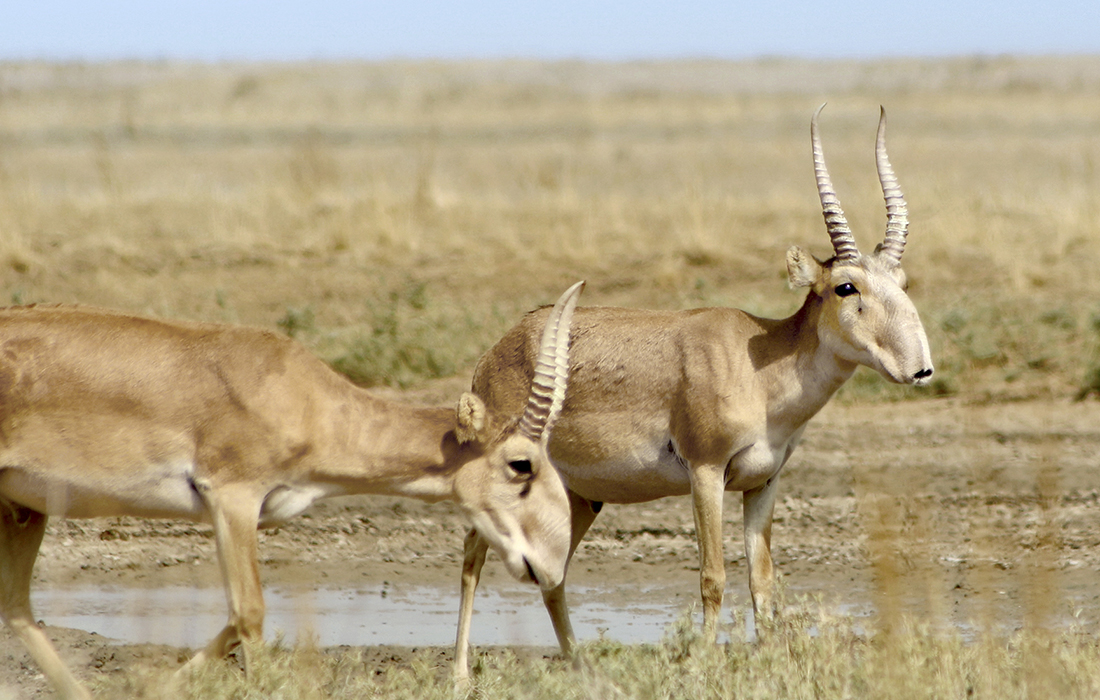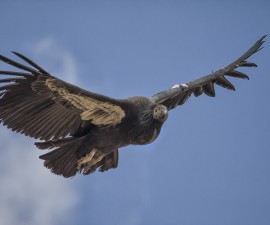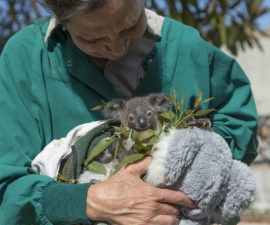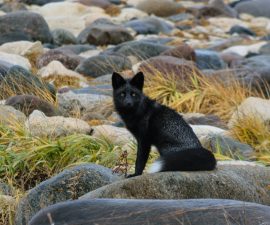BY Karyl Carmignani
Photography by David O'Connor
You might think a herd-living herbivore that weighs about as much as a German shepherd and roams a remote, often freezing, treeless landscape would largely be out of harm’s way. But alas, the sturdy little saiga of the Eurasian steppes is ruthlessly stalked by poachers, as well as tiny but no less deadly threats like bacteria and viruses. Saiga populations (there are only five) have crashed over the last decade, with more than 80 percent of the animals lost due to overhunting for meat and poaching of males for their horns, used in Asian folk remedies.
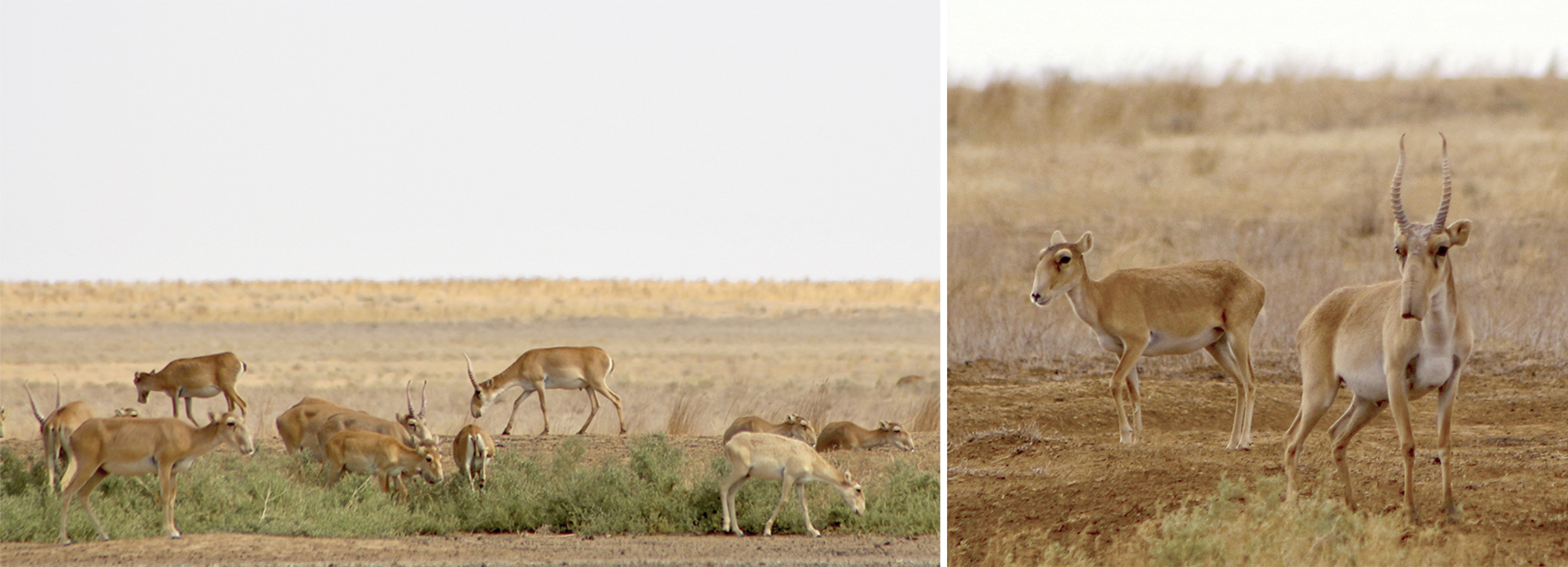
PLAYS WELL WITH OTHERS
Saiga (pronounced sigh-gah) live in herds, munching on grasses and herbs across the landscape. Males have horns, which they are heavily hunted for, while females do not. Both sexes have a large, trunk-like nose.
Another ongoing threat is habitat loss due to “inadequate levels of protection in some places, competition with livestock for space, and migratory barriers like border fences,” explained David O’Connor, researcher, Global Partnerships, San Diego Zoo Global. Additionally, a dreadful “small ruminant plague” virus killed off thousands of Mongolian saiga and a bacterial disease struck a larger population of Russian saiga that live on the grasslands of Kazakhstan. In May 2015, when the saiga gathered to give birth, about 200,000 perished from a usually harmless bacterium. The hardy antelope with the tiny tail and bulbous nose was—and is—in dire straits! Fortunately, several conservation organizations from around the globe are poised to help this antelope continue to roam.

COOL COLLABORATION
San Diego Zoo Global is part of an international collaboration to help this critically endangered antelope. “Since 2015, San Diego Zoo Global has partnered with the Saiga Conservation Alliance (SCA) and other organizations to collaborate on various aspects of saiga conservation and conservation education,” said David. One aspect of this was to hold a teacher training workshop, co-led by Colleen Bowman, San Diego Zoo educator, in Nukus, Uzbekistan, “to provide educators with an increased capacity to teach conservation to their students, including the saiga’s role in the ecosystem and its migration patterns,” he added. Colleen also created a saiga conservation education teaching guide and booklet called “Saiga: Spirit of the Steppe” that has already been translated into Russian and is widely used across the region.

PROJECTS WITH PROMISE
School children learn about their local wildlife, including saiga, and how important it is to preserve their environment.
Last August, San Diego Zoo Global partnered with the Russian Academy of Science’s Institute of Ecology and Evolution and the Saiga Conservation Alliance to co-host a two-day workshop in Moscow, to exchange knowledge and develop a strategic plan regarding the role of specialist captive breeding to mitigate threats to the saiga. Experts from the saiga range states—Russia, Kazakstan, Uzbekistan, China, and Mongolia—as well as from the US and the UK, were eager to develop an international network to help reinforce conservation of wild populations. “This workshop was an excellent opportunity to meet with like-minded colleagues from different institutions and discuss best practices in saiga husbandry, as well as in situ populations,” said Andy Blue, assistant curator of mammals, San Diego Zoo Safari Park. “We look forward to an ongoing relationship with our in-country partners and collaborators for saiga conservation.”
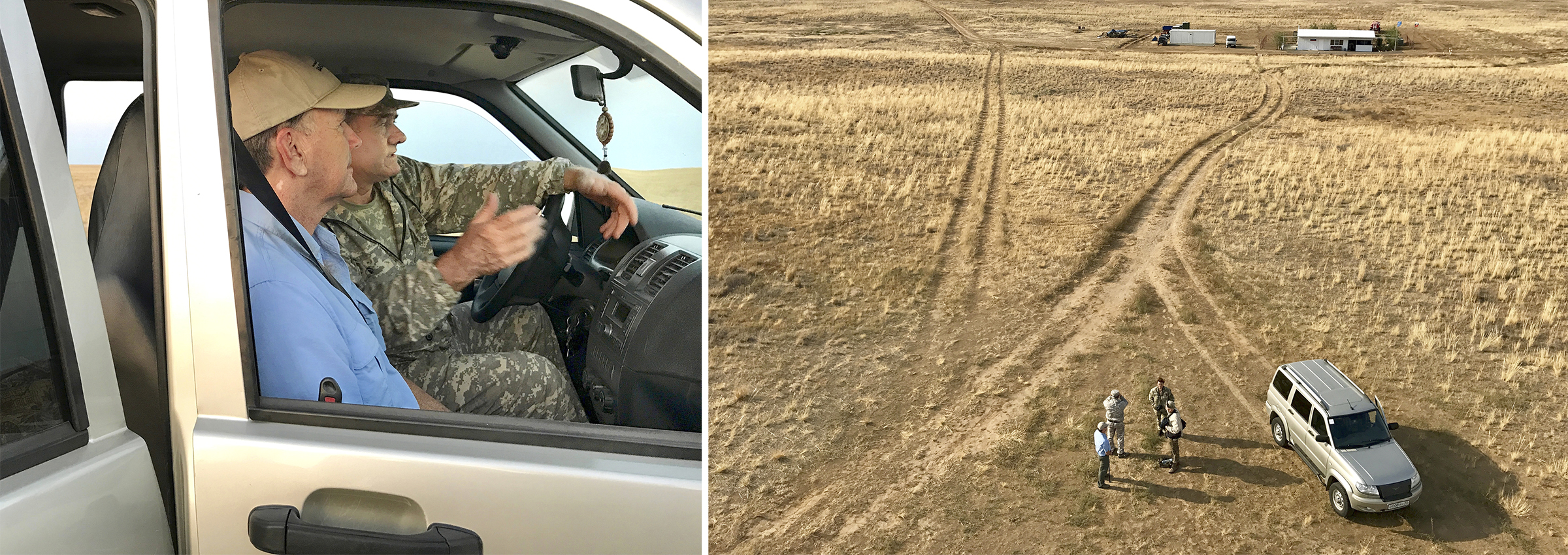
SHARING KNOWLEDGE
Over 100 saiga calves have been born at the Safari Park since the first ones arrived in 1970, creating expertise that can help struggling wild populations. Researchers also presented a workshop on best practices with reintroductions, including other successful San Diego Zoo Global projects like the Peninsular pronghorn in Mexico and the Arabian oryx in Oman. Andy spent time at the Askania Nova, a biosphere reserve in the Kherson region of Ukraine, which hand raises some of its saiga calves. San Diego Zoo Global supports the reserve financially to ensure fencing can be maintained, as well providing husbandry expertise to improve survival rates of neonate saigas. Soon, staff members, including a nursery keeper, will go to the reserve to assist and share ideas.

TEAMWORK
San Diego Zoo Global employees Andy Blue and David O’Connor (right to left) join local staff who help to protect saiga in the field.
San Diego Zoo Global also provides funding and expertise to saiga conservation work at the Center for Wild Animals (CWA) and the Stepnoi Reserve, both located in Kalmykia, Russia. CWA has an education center, which is key in helping local children (and adults) appreciate and protect this native antelope. Rangers based at the Stepnoi Reserve fearlessly protect the saiga from poachers, and thanks to their commitment, the wild herd has increased from about 2,000 animals to 4,500 animals in two years. San Diego Zoo Global provides funds for vehicles and gasoline, as well as spotting scopes, so the rangers can effectively patrol and watch over the herds.

RUNNING OUT OF TIME
As is the case with the relentless slaughter of rhinos for their horns, when demand for saiga horn stops, the killing will stop, too. Males are poached so their horns can be ground up and used in Asian folk remedies. This gender-biased poaching has led to female saiga outnumbering males 100 to 1, which will have a devastating genetic and behavioral impact on the population. To address the cultural issues surrounding the demand for saiga horn, San Diego Zoo Global has been working with partners in Laos, Cambodia, Vietnam, and Singapore to conduct “comprehensive social science surveys across these countries to better understand why people want to buy saiga horn and saiga products,” said David. These surveys will help guide effective campaigns to deter saiga horn consumption. The saga of the saiga continues, and with international partnerships and collaborations, this gentle antelope will live to take another “steppe” in its blustery landscape.

